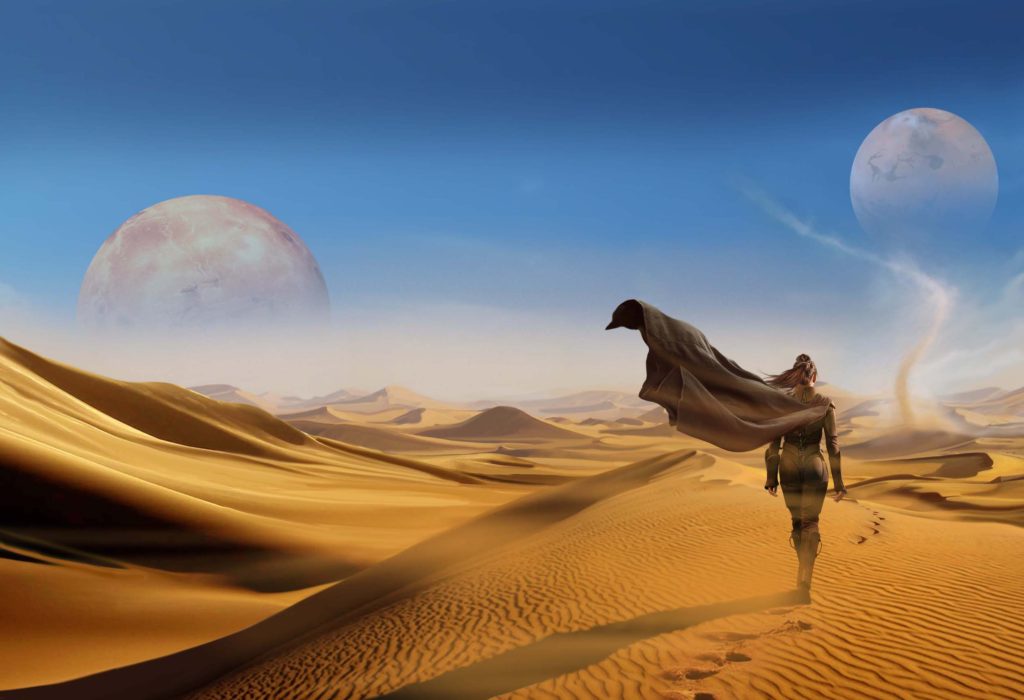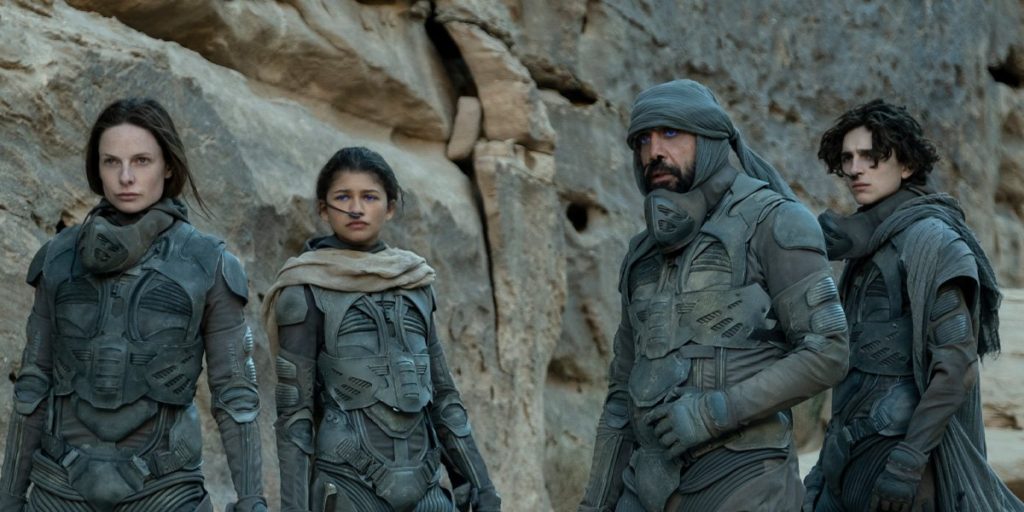Apparently the space fantasy genre is a big deal in the Middle East, and Dune is hitting high horizons in the box office. In the United Arab Emirates, the movie made $1,436,628 till now, whilst in Saudi Arabia, it reached $952,000.
A history of confused adaptations
It’s 1974. An alliance of French producers cooperated to deliver Frank Herbert’s novel “Dune” into a gigantic-budget movie. The movie was to be directed by Alejandro Jodorowsky, who is well known for his grotesque work.
Jodorowsky wanted to create a spiritual experience that resembles the one in the book by blending the concepts of the chosen one, with the political complications of leadership and obedience.
His unrealistic vision that included contracting Salvadore Dali and Pink Floyd, alongside the best visual-effects artists of the time, failed to convince Hollywood producers. So, the project moved to David Lynch, who made one of his worst movies ever with absurd visuals and silly dialogue. “Because it was a heartache for me. It was a failure and I didn’t have final cut. I’ve told this story a billion times. It’s not the film I wanted to make. I like certain parts of it very much — but it was a total failure for me,” Lynch said.
Dune remained a novel consisting of high untapped potential, waiting for a decent cinematic reveal to do it justice.
It’s 2021. The dawn of ravishing cinematic technology and relative ease to transform any artistic vision into reality. The Canadian director Denis Villeneuve took the responsibility of making the conclusive cinematic version of Dune. A grand project with gigantic designs and magnificent battles. An enormous and charming movie filled with fascination that transports the audience to another world.
Did Denis manage to accomplish what others failed to do, or does the myth of the impossible novel remain intact?
Frank Herbert’s novel is an immense and extensive epic of names, ideologies, and different races, which might explain the hardship of the adaptation to the big screen.
Denis’s approach depends primarily on visuals. It doesn’t care to elaborate on the backgrounds of the royal families, the planets’ natures, or the characters. Instead, it invests a lot in manifesting how each planet looks like, the populations’ wardrobe – which gave fascinating costume designs – how they identify themselves and their family connections, and how these characters go about in their diverse atmospheres.
Dune the novel and its optical equalizer, Dune the movie
When watching Dune in a dark theater, one might forget where they are or how they got there. The intergalactic visual world snatches you from the dark theater into a different place with insanely vast and intricate details that dwarfs the actors and the audience. A world where you can feel the touch of the sand, the movements of the spaceships, and smell the overpowering scent of blood.
Villeneuve creates an integrated sensory world, but disregards the structure of characters and the main struggles which fall remarkably flat and shallow. The movie ends up being more of an optical equalizer or a diagram of the novel, rather than an independent artwork.
As fascinating as the cinematic experience of the movie is, once it gets off the big screen and onto the screens of our PCs and TVs, it’ll lose all its charm. Nothing will remain in the audience’s memory but a massive technological influence that will be overshadowed a few years later when cinematic technology advances even more.
What makes the experience even worse is Villeneuve’s choices for the characters’ races, making Arakis’ population an oppressed colored nation waiting for a white savior. In a time where humanity tiptoes around political correctness, this choice seems rather confusing.
It’s not the first time racial and nationalist propaganda stained Villeneuve’s movies. His famous adoption of “Arrival” portrays the American government as one with superior leadership and incredible patience. It never races to attack stranger “aliens” with weapons, unlike other nations, such as Russia and China, which, according to the movie, are savage nations that race to annihilate anything that doesn’t look like them.
Dune is a movie of spectacular visuals, even poetic and sentimental sometimes. Its sentiment extends to include the actors and actresses’ highly calculated movements, the battle designs, and surrealistic costume designs. To experience the best outcome of the movie, find the biggest and most perfect screen, ignore all the intellectual elements, and focus on the charm of the sensory experience. However, once the movie is off the captivating widescreen, it loses all of its artistic values.




